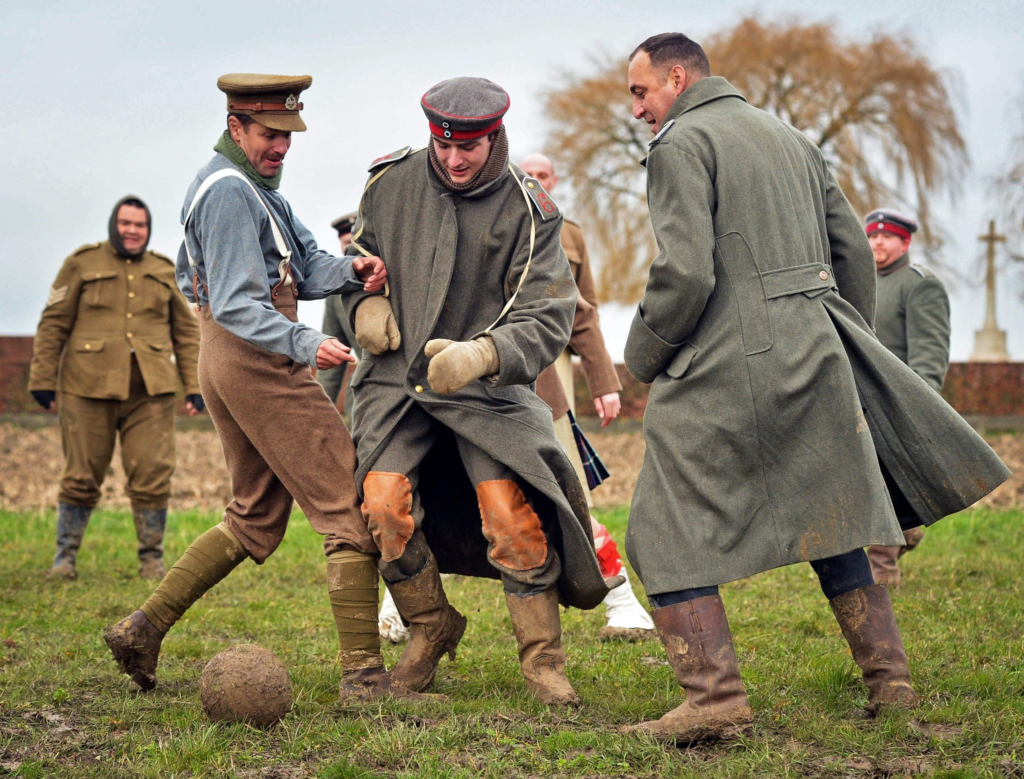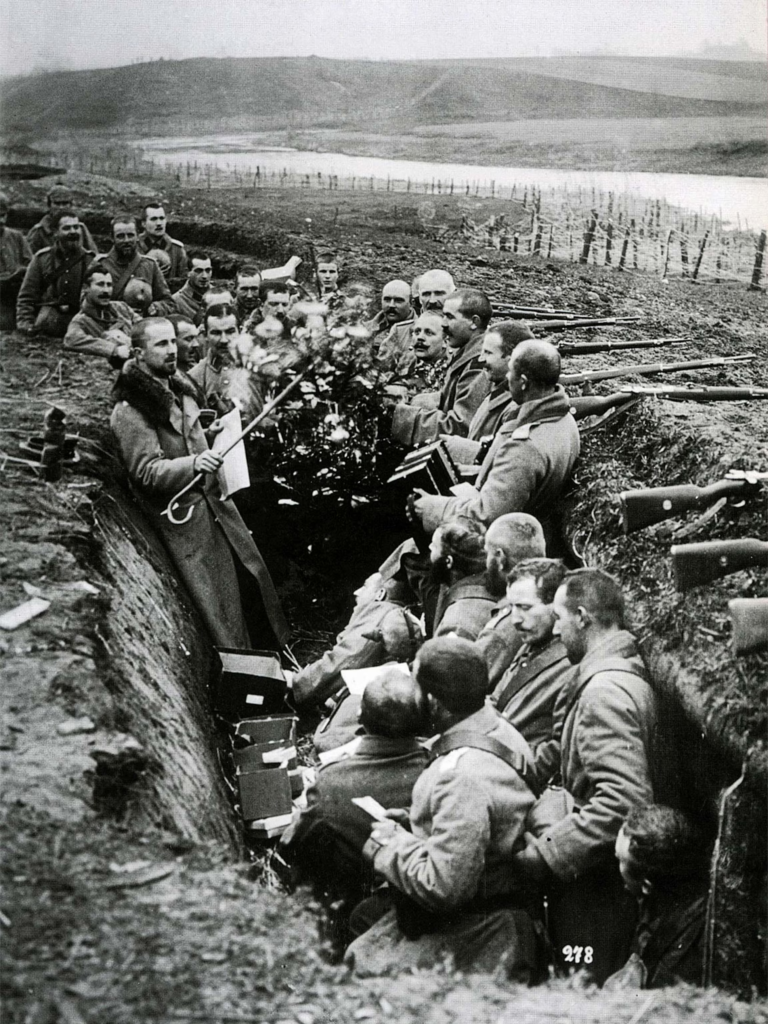
In the bleak, mud-soaked trenches of World War I, where death and despair were daily companions, something remarkable happened on Christmas Day in 1914. Along the Western Front in France and Flanders, British and German soldiers set aside their weapons, left their fortified trenches, and met in no man’s land. What followed was an extraordinary event that has since become a symbol of shared humanity and decency in the midst of the horrors of war.
A Spontaneous Gesture of Peace
The Christmas Truce was not orchestrated by military leaders; rather, it was a spontaneous and unofficial ceasefire that spread along various parts of the front. The truce began with soldiers on both sides singing Christmas carols from their trenches. “Silent Night” could be heard in both English and German, and soon, curious soldiers began to emerge, tentatively waving white flags or showing signs of peace.
In an unprecedented display of goodwill, soldiers ventured into no man’s land—the deadly ground between the trenches that was usually riddled with barbed wire and shell craters. There, they shook hands, exchanged small gifts like chocolate, cigarettes, and rations, and even took photographs together. Some shared stories of their families back home, and for a brief moment, enemies became fellow human beings.

The Legendary Soccer Match
One of the most enduring stories from the Christmas Truce is that of the soccer match supposedly played between the British and German soldiers. Although historical accounts vary, and the details are often debated, it is widely believed that some form of soccer was indeed played. A makeshift ball was produced, and soldiers from both sides joined in a game that was less about competition and more about camaraderie.
The soccer match, if it can be called that, represented something far greater than the game itself. It was a powerful symbol of the common ground shared by all people, even those on opposing sides of a brutal conflict. For those few hours, the soldiers were not enemies but simply men enjoying a game, connected by their shared love of sport and the universal longing for peace.

Lessons from the Christmas Truce
The Christmas Truce of 1914 offers profound lessons that remain relevant today. First and foremost, it underscores the shared humanity that exists even in the most divided and hostile circumstances. The soldiers who participated in the truce recognized, if only for a moment, that they were more alike than different, bound by the same hopes, fears, and love for their families.
This event also teaches us about the power of decency and the human capacity for compassion. Despite the brutal conditions of the trenches and the orders they had been given, these soldiers chose to act with kindness and respect toward one another. Their actions remind us that, even in the midst of conflict, there is always room for decency and moral courage.
Furthermore, the Christmas Truce serves as a stark reminder of the futility and tragedy of war. The fact that these men could share a moment of peace and even joy, only to return to killing each other the next day, highlights the senselessness of the violence that war perpetuates. It prompts us to question the nature of conflicts, both past and present, and to consider the ways in which we might seek peaceful resolutions instead.
Conclusion

The Christmas Truce of 1914 remains a powerful symbol of hope, reminding us that even in the darkest times, there is a light of humanity that can never be fully extinguished. It teaches us that while war dehumanizes and divides, moments of compassion and understanding can transcend even the most entrenched hostilities. As we reflect on this event, we are encouraged to foster decency, seek common ground, and pursue peace in our own lives, wherever conflicts may arise.

